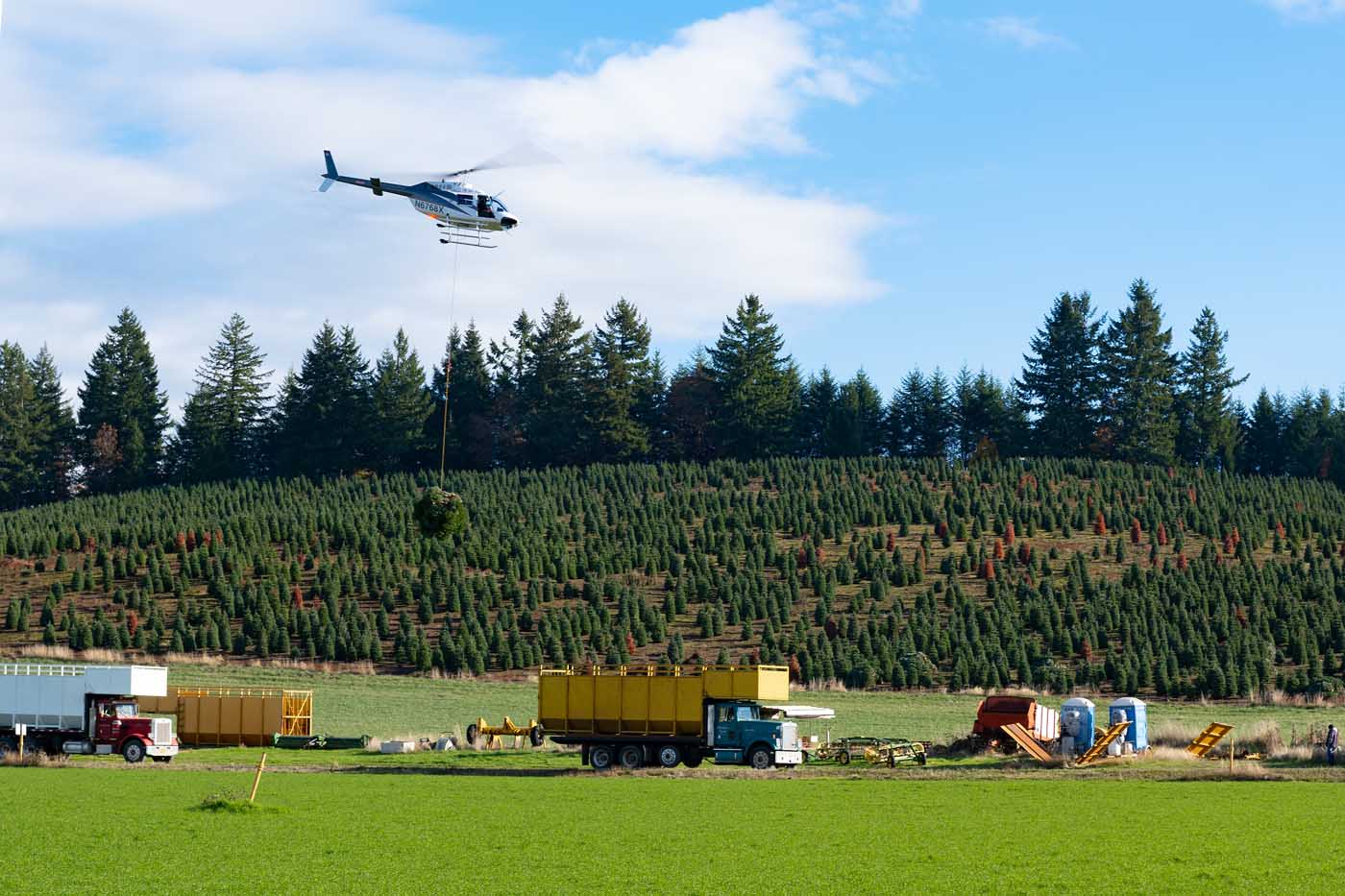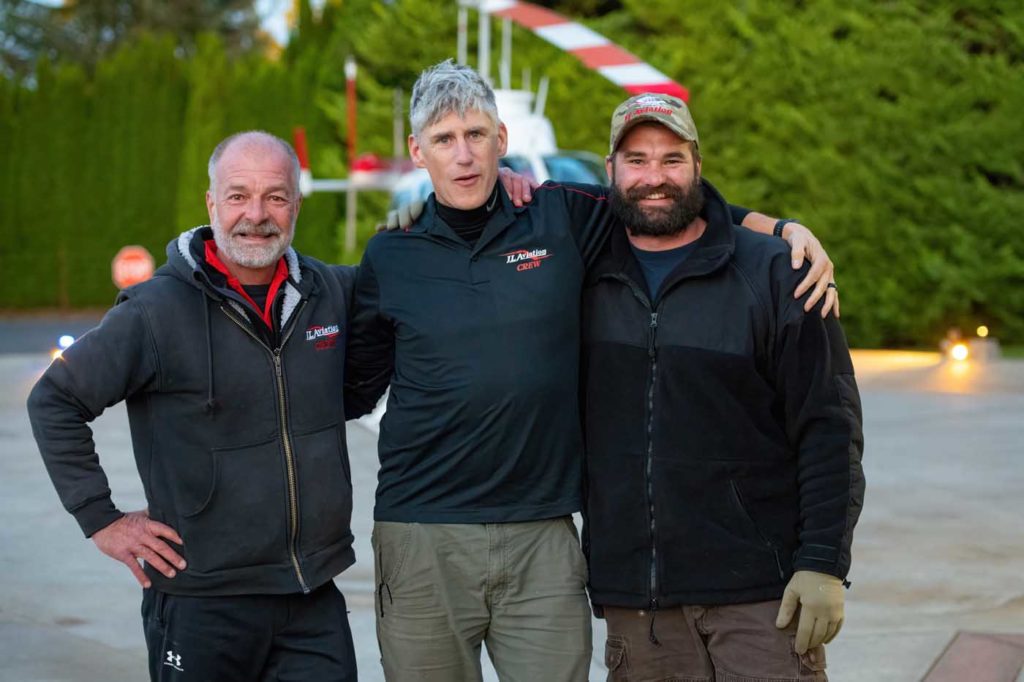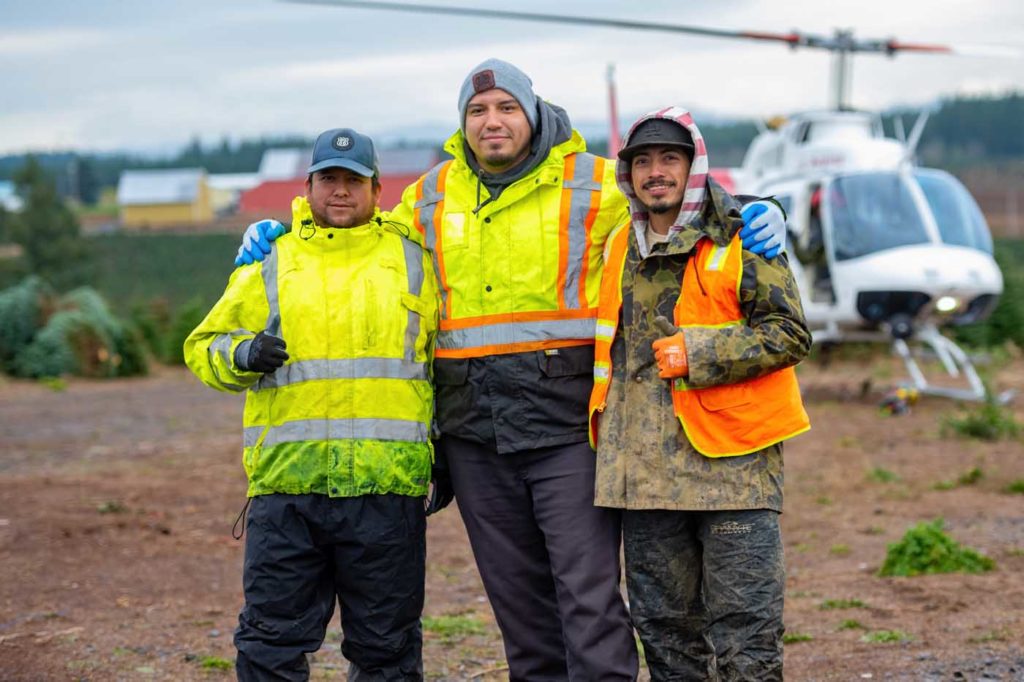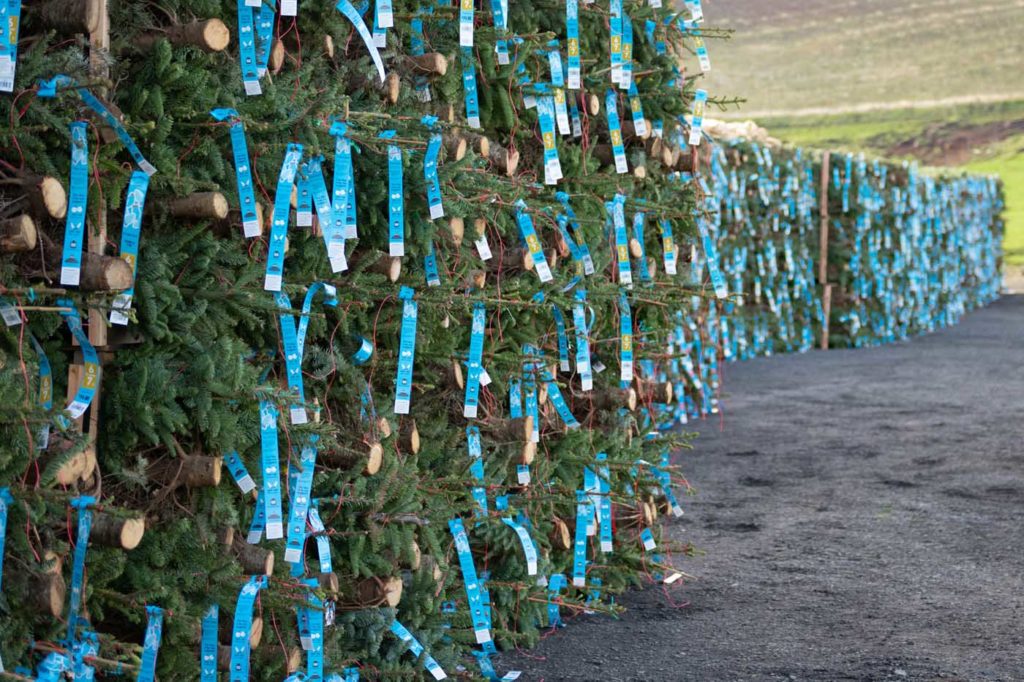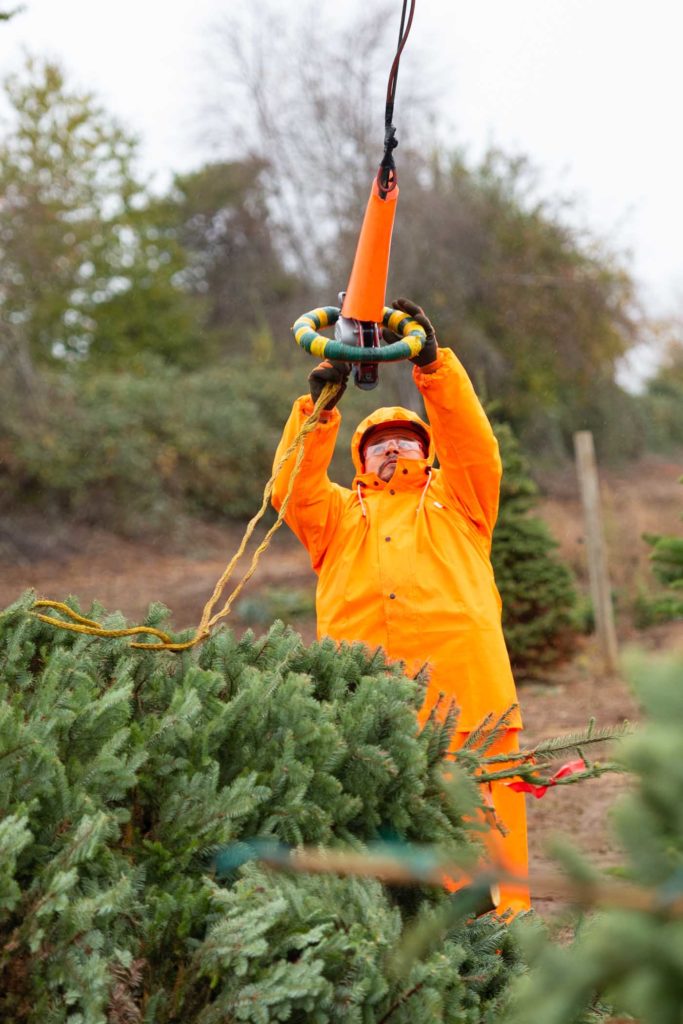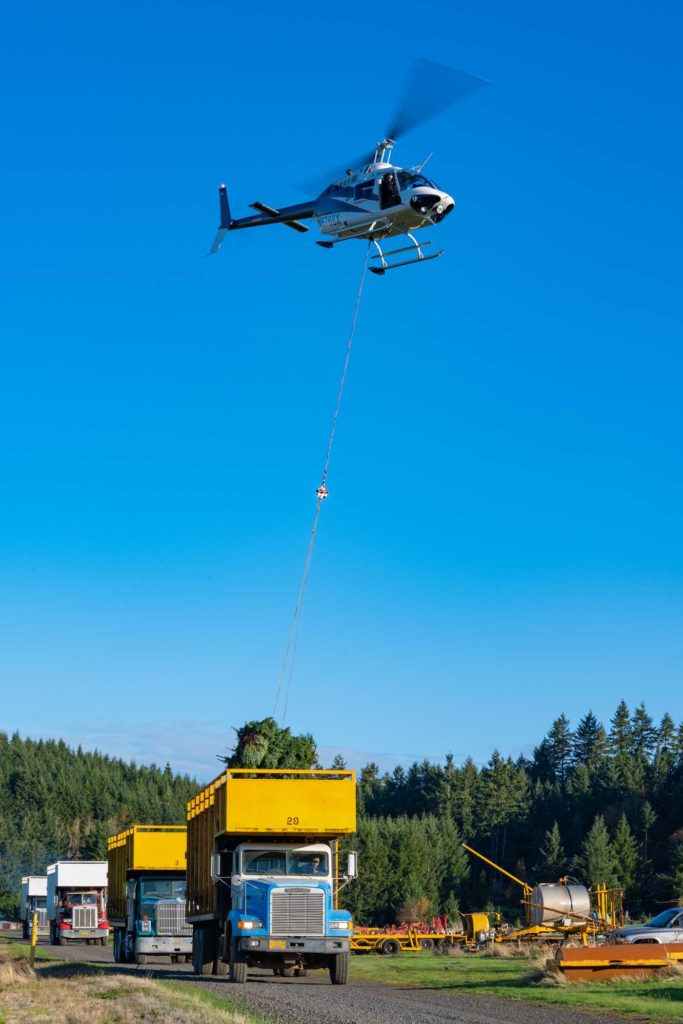For millions of people all around the world, holiday celebrations just wouldn’t be the same without a beautiful, freshly cut Christmas tree in the house. But in selecting that “perfect” tree around which they will create lasting holiday memories, it’s likely few consider all the work that has taken place to bring the tree to this point.

Typically, the Christmas tree harvest takes place during a brief five- to six-week period beginning early November. For most large growers, the harvest is a well-choreographed herculean effort. And, in many cases, the linchpins to the overall success of harvest operations are helicopters.
In the U.S. alone, an estimated 25 to 30 million Christmas trees are harvested each year. Oregon holds the distinction as the country’s leading producer, with 42,000 acres dedicated to Christmas trees, yielding an estimated annual harvest of 8.5 million trees valued at over $100 million.

Oregon-based McKenzie Farms is one of the largest growers of Christmas trees in the U.S. The company was founded in 1991 by McKenzie “Ken” Cook, a businessman who, after many successful years in corporate America, was planning to retire in Oregon. That was until a friend presented him with the prospect of a new venture growing Christmas trees.
While Cook had no experience in this area, his entrepreneurial spirit took over. “I started without owning one Christmas tree,” recalled Cook. “And today, we farm on 10,000 acres and own between eight and 10 million trees, depending on the time of year.”
The Christmas tree harvest presents unique challenges to the grower. “From a logistical standpoint, it’s probably one of the most difficult agricultural crops there is to harvest, because of the labor intensity of the business,” said Cook.
He credits much of McKenzie Farms’ success to his strategic use of helicopters, flown by highly skilled pilots, to maximize efficiency during the harvest. “A helicopter harvest is five times more efficient than a mud harvest [manually moving a cut tree from the field],” said Cook. “It also protects the integrity and quality of the tree because you don’t have to drag it through the mud.”
For the past 29 years, Cook has entrusted his annual Christmas tree harvest to a relatively small local helicopter operator: JL Aviation (JLA). Founder Jeff Linscott quickly established his reputation in the highly competitive Christmas tree harvest industry, and followed his business instincts to create the foundation for his company’s ultimate success.
“I think it was 1992 or ’93, Jeff [Linscott], walked into my office and introduced himself,” recalled Cook. “He told me a little about his military background and his experiences. He told me he was starting a company and only had one bird at the time. And he wanted to know whether or not he could do my harvest for me.”
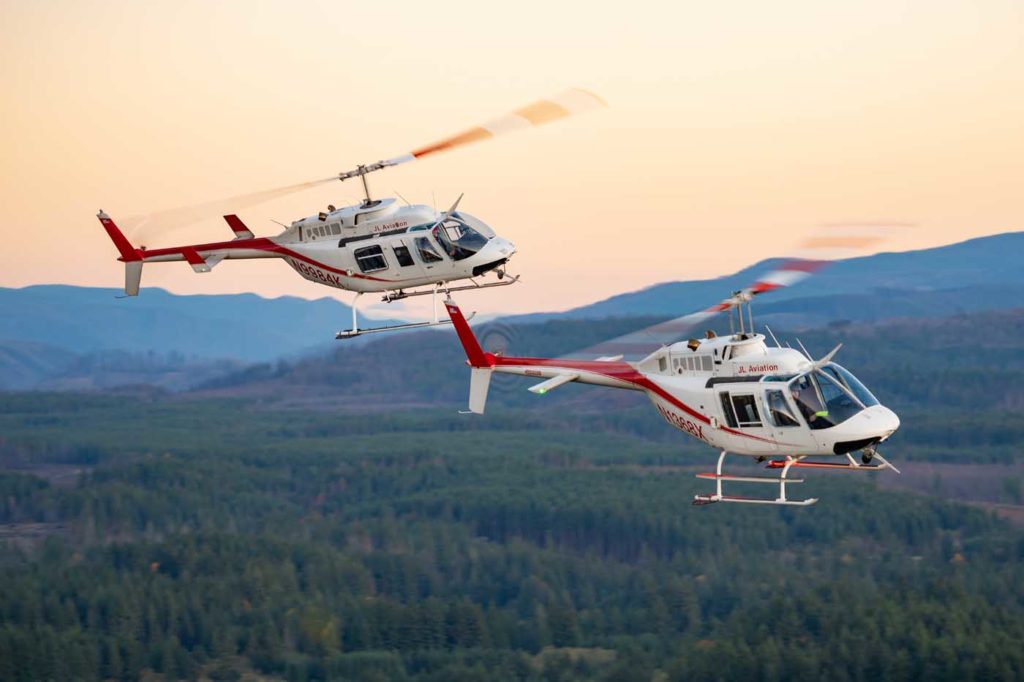
Cook told Linscott he was “more than covered” by another operator for the harvest, but Linscott was insistent and pressed Cook for an opportunity to get even a small piece of the work. Cook offered it to him on a piecemeal basis, paying per tree flown.
Linscott accepted the offer, and while Cook suspects Linscott probably lost money in the first year or two, it wasn’t long before Cook realized he had found his new helicopter harvest provider. “[Linscott’s] mindset and his discipline and proficiency in terms of flying that bird was far superior to anybody else,” said Cook. “And it just got better and better and better and better.”

Today, McKenzie Farms harvests about 850,000 to one million trees each year. Of those, JLA flies between 700,000 and 800,000.
Building a Brand
Linscott’s military service spanned 22 years, encompassing the U.S. Marine Corps, Oregon Army National Guard, and the U.S. Air Force Reserve. During his time with Guard and Reserves, he built considerable experience in external load operations, flying Hueys in support of law enforcement marijuana eradication missions.
In the years before he left the service, he began splitting his time with civil operators. His introduction to McKenzie Farms was the catalyst for him to create his own business as a helicopter operator.
Despite many Reserve colleagues discouraging the idea, Linscott was not deterred. In 1996, he purchased a Bell 206 JetRanger and formally established JLA. He based his one-person operation from a small hangar at Portland International Airport, and was committed to building his business around two core values: ensuring his clients’ success, and never compromising on safety.
By 2004, Linscott had his new business on firm footing. This provided him the security to finally retire from the Reserves and concentrate entirely on JLA.
However, the unpredictable weather and congestion around Portland International Airport was becoming a source of frustration for Linscott. He was also seeking more space to better accommodate his growing business, with two helicopters and four employees.
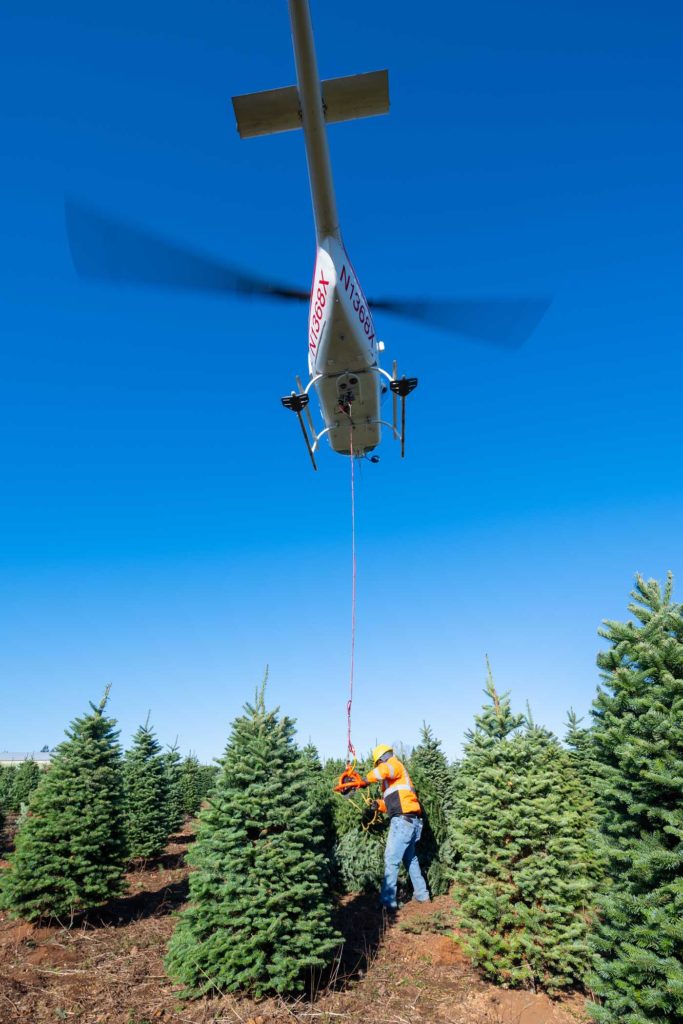
In 2007, he purchased a 10-acre airport in the small town of Boring, Oregon, 18 miles southeast of Portland. He added a 6,000-square-foot office and hangar facility, as well as 80,000 yards of concrete apron for aircraft movement and parking.
Today, JLA employs seven pilots (three are also A&Ps), a director of maintenance, and two full-time maintenance technicians. Linscott is proud of his team of military veterans and their achievement of having operated for 25 years with an unblemished safety record.
The primary working fleet consists of four helicopters: three 206B III JetRangers and one 206L LongRanger. The company also has an Airbus Bo.105 CBS 4, (presently hangared and not operational), and two Cessna fixed-wing aircraft for company business.
Besides their Christmas tree harvest work, JLA remains busy throughout the year with external load and utility work, game surveys and capture, firefighting, charter flying, support for scientific research, laser mapping, and aerial filming throughout North America and Alaska.
Bring on the Harvest
As November draws near, anticipation builds at McKenzie Farms. The harvest contractor and the helicopter crews have a very narrow window — just 34 days — to complete the work. For its portion of the job, JLA typically dedicates all four aircraft throughout the harvest, each machine expected to average 250 hours.
Working together, they must cut, move, bale and ship nearly one million Christmas trees and up to four million pounds of fir boughs used in making Christmas wreaths. To complicate matters, McKenzie’s trees are spread between about 40 different farms throughout the state.
Each day before dawn, teams of tree cutters enter the fields to begin cutting the trees designated for harvest. Teams of bundlers then use ropes to bundle the trees into roughly 700-pound (315-kilogram) loads (which is about 12 to 14 trees).

The helicopter pilots then fly in with what’s referred to as a “short line” with a remote hook. A “hooker” attaches the hook to the bundle, and the trees are then flown to a nearby yard to be individually baled and loaded aboard trucks. “It’s mesmerizing watching the birds as they harvest Christmas trees,” said Cook. “It’s absolutely unbelievable.”
Pilots aim for 20- to 30-second turns, from hooking a load to dropping it off at the load site, then back for another load. This brisk tempo allows each helicopter to move 10,000 trees every day.
“Flying trees is a truly demanding endeavor,” said Mike Nowak, in his third year flying for JLA. “It’s high production work, and the fall weather in Oregon is usually less than ideal. It tests your personal endurance to do it for six weeks straight, and it tests your skills as a pilot to be able to do it safely.”
“When we have our pre-harvest safety meeting, Jeff always reminds us: ‘This is a marathon, flown like a sprint,’ ” said Nowak. “Sometimes you feel like it’s a battle — you versus the trees and the elements and the clock. But when you get into a groove, it’s like a dance — precise yet smooth, rhythmic, and fast — the pilot, the machine, the crew and the trees all melding together into a symphony of efficiency.”
He said pilots become creatures of habit, eating the same thing every day to avoid getting sick, and performing the same routine before and after work every day to keep consistency.
“Some guys listen to music while they fly, some listen to the same song on repeat,” said Nowak. “We build nests in the copilot seat with food, drinks and rags to wipe the windshield. We wear the same rain gear as Alaskan fishermen to keep the 80-mph raindrops from affecting us and increasing fatigue.”
Of course, aircraft availability during the harvest is absolutely critical. “A big challenge is making sure the maintenance department gets the rest they need to be attentive and alert to possible maintenance issues,” said Steve Watson, JLA’s director of maintenance.
“Sometimes you feel like it’s a battle — you versus the trees and the elements and the clock. But when you get into a groove, it’s like a dance — precise yet smooth, rhythmic, and fast — the pilot, the machine, the crew and the trees all melding together into a symphony of efficiency.”
“The mechanics’ eyes on the machine before and after the shift are critical,” he continued. “Post-flight inspections every night are key for the success of the next day’s mission. After a nine-hour day [of flying], we don’t expect the pilots to crawl over their aircraft and post-flight it.”
Watson said the team typically completes inspections and scheduled maintenance overnight so as not to interrupt the harvest schedule. He said JLA’s extensive inventory of spare parts makes it straightforward to support the aircraft during the high tempo of operations, but also praised the reliability and dependability of the Bell 206.
Making a Harvest Pilot
All of JLA’s Christmas tree harvest pilots had previous experience flying utility work with a long line. “A lot of our safety record has to do with the average level of experience that everyone has, along with the training and procedures that Jeff developed,” said Nowak. “The average hour level for our tree pilots this year is over 13,000 hours.”
Those new to the team will start by driving the fuel truck and watching the process. “They have a handheld radio and I’m talking about what I’m doing,” said Linscott. “I’m articulating every move I make.”
Eventually, a new pilot candidate may be given the opportunity to try their hand. “When I have three to five bundles left in the field . . . and I’ve already told the harvest contractor that I’m training, I’ll land and I put [the new pilot] in the seat,” said Linscott.
“The hardest [part] is getting that hook into the hooker’s hand. So one step we’ll do, before harvest season, [is] we’ll put two people out into a field and we’ll let the new guy go back and forth with a line on between two people just practicing getting that hook into the hands of the hooker.”
Pete Emerson, a former U.S. Army UH-60 pilot and A&P, serves as the company’s chief pilot. He said it takes about two weeks of instruction and coaching before new pilots may be released to fly jobs on their own. “Of course they’re going to be slow and we tell them not to feel pressured,” he said. “In the past we’ve offered a discount to the tree grower because we know this new pilot is slow, but we’re willing to invest in the future with him.”
For those whose interest has been piqued by the prospect of helicopter Christmas tree harvesting, Emerson warned that it takes a lot of stamina and is “emotional.”
“The farmers want to get the trees in as fast as they can, because we have semi-trucks waiting,” he said. “And then weather and maintenance can be a real disaster for the whole program. Once you get a weather day and you miss out on that one day of flying, now you’re 10,000 trees behind.”
This year is the 29th harvest season for JLA in support of McKenzie Farms. While Cook sold the business just over two years ago, he continues to provide consulting to the operation.
“Our harvest with Jeff right now is probably close to a million dollars, in terms of the amount that goes to him,” said Cook.
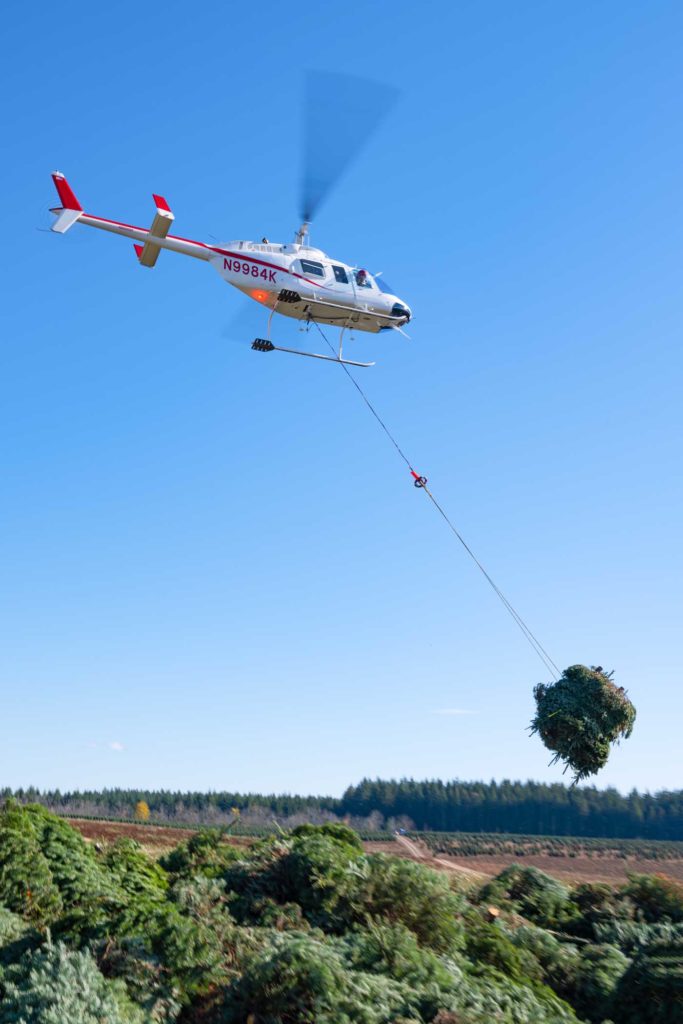
“He runs a very good organization; he doesn’t take any undue risks,” he added. “If there’s excessive wind or snow or fog where visibility is compromised, he doesn’t take any chances. But when he works, he probably gets twice as much done as anyone else flying here in the Northwest.”
Cook also gave high praise to Linscott for the team he has assembled and his determination, work ethic and business sense.
“He and his guys are the best,” said Cook. “There is no one comparable. There are some who are very good, but no one is as good and efficient as Jeff Linscott and his team.”





